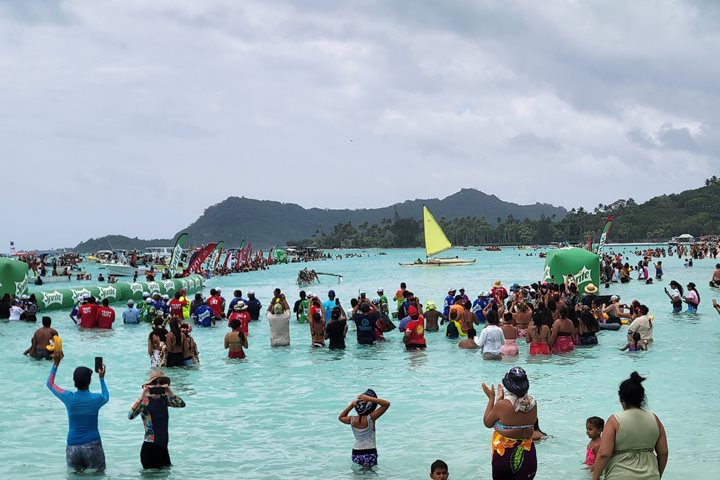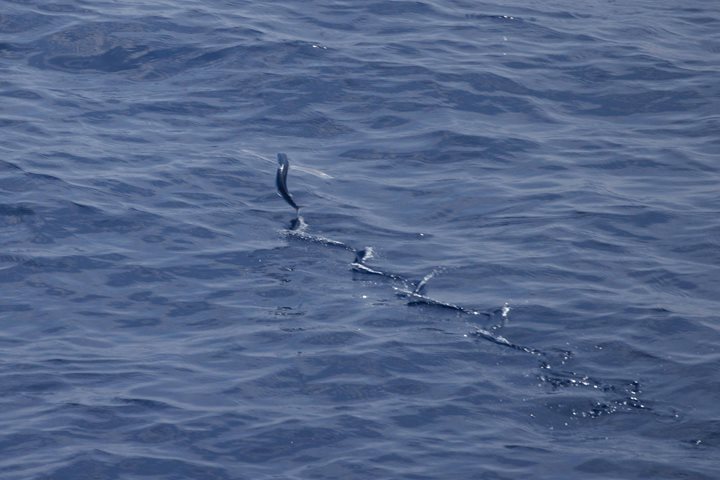Before breakfast National Geographic Resolution entered the world-famous Chuuk (Truk) lagoon through the north passage. We could see the surf breaking on the barrier reef surrounding this 40-mile-long lagoon. The eroded volcanic peaks stuck up out of the water in middle of the lagoon, making this island complex very different from an atoll.
This morning we disembarked in the main town of Weno. We took a bus and SUVs on a series of rough roads across the island to the eastern tip. The guests ventured on a trail through the jungle and up a hill. We saw several unusual plants, including the sensitive plant and creeping vines. When we got to the top of the hill we climbed an old Japanese light house structure and took in magnificent views of the turquoise colored bays. We saw many birds and flying foxes, which are large tropical bats.
When we got back to the ship we were greeted by dozens of brightly attired dancers from a nearby island in Chuck lagoon. The performers sang and danced for us on the dock and beat on their chest and arms as instruments. After the performance they shared some of their handmade items with us which were available to purchase.
In the afternoon we took local motorboats to go snorkeling over shipwrecks and downed airplanes in the lagoon. This assemblage of shipwrecks is perhaps the largest collection of sunken ships on earth. They are the result of a surprise attack on Japan’s navy base by American airplanes in February 1944. It was Japan’s “Pearl Harbor”, with devastating consequence for Japan’s military. Over 50 ships were sunk, 250 airplanes were destroyed, and 5,000 men died during the attack.
The first wreck we visited was a sunken ship in about 50 feet of water. The biggest surprise was seeing huge brain corals, up to four feet in diameter, that have grown on the shipwreck during the past 80 years. The second location was the site of a downed Japanese aircraft of which we could clearly see the wings. Finally, we rode boats over to a small private island to snorkel among the corals, sea cucumbers, and colorful fish.
During recap we learned about photographic tips and the Battle of Chuuk, which was called Operation Hailstorm. Afterward we had a delicious dinner where we discussed the amazing sights of this memorable day.
Photos by National Geographic photographer Nitye Sood and Grosvenor Teacher Fellow Kelly Blais







